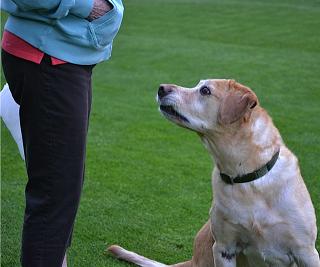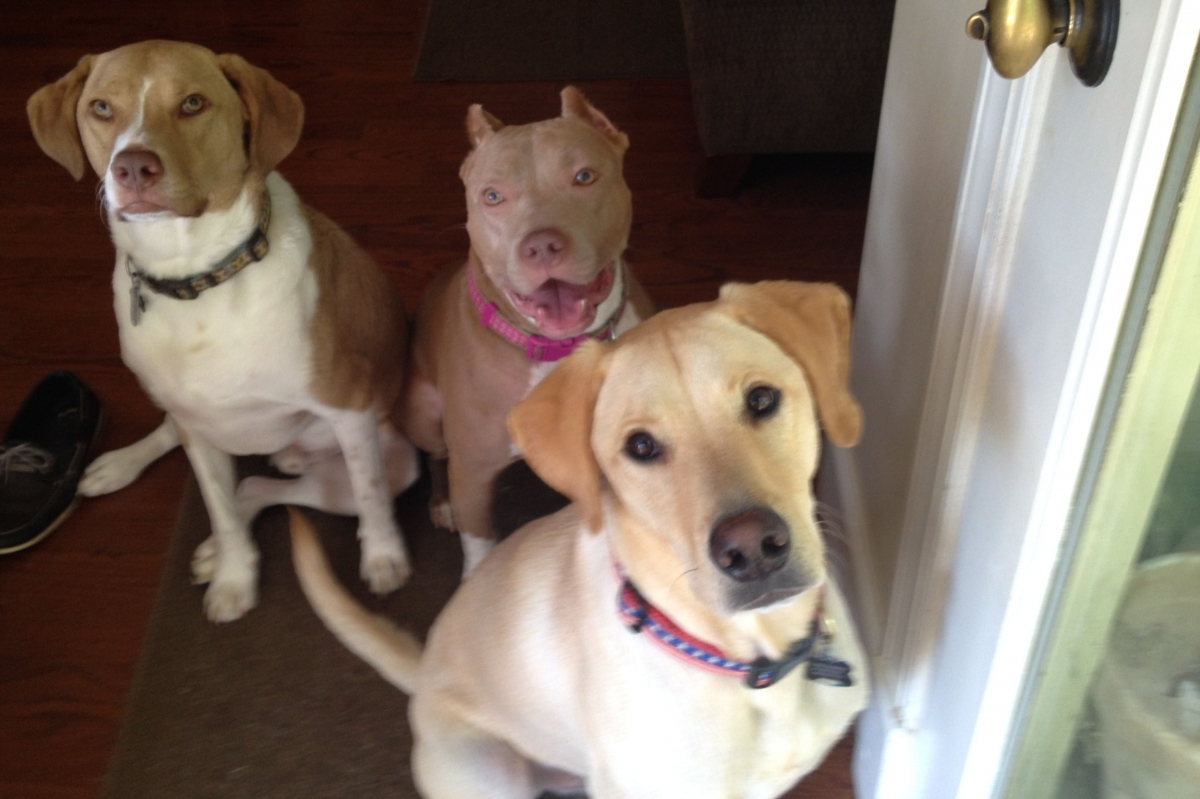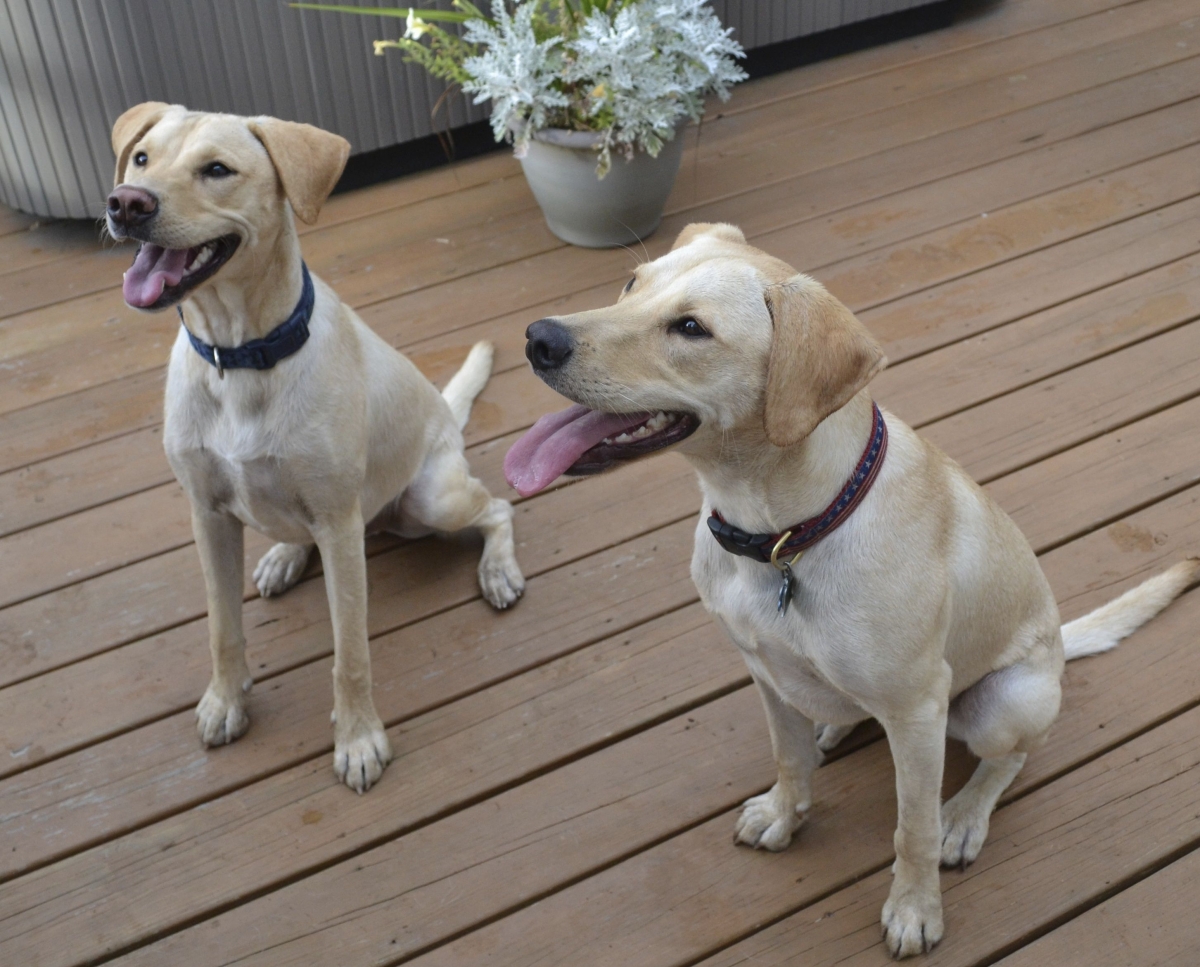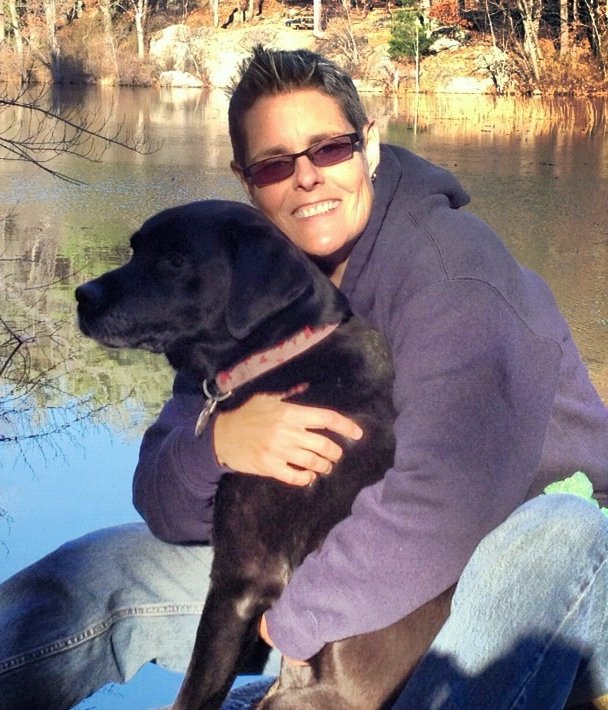 Author: Elsa Larsen, Dog Behaviorist & Trainer | Owner: My Wonderful Dog. When I first started thinking about what I might write for this article, I spent some time re-reading Ray and Lorna Coppinger’s lovely book “Dogs: A New Understanding of Canine Origin, Behavior and Evolution”. Before I broached the subject on being an Alpha in my relationship with my dog, I wanted to go back and get clear on the similarities and the differences between dog relationships and wolf relationships. Personally, I’m not particularly fond of the term Alpha. I prefer pack leader or simply leader, when I refer to my relationship with my dog and the other dogs in my life.
Author: Elsa Larsen, Dog Behaviorist & Trainer | Owner: My Wonderful Dog. When I first started thinking about what I might write for this article, I spent some time re-reading Ray and Lorna Coppinger’s lovely book “Dogs: A New Understanding of Canine Origin, Behavior and Evolution”. Before I broached the subject on being an Alpha in my relationship with my dog, I wanted to go back and get clear on the similarities and the differences between dog relationships and wolf relationships. Personally, I’m not particularly fond of the term Alpha. I prefer pack leader or simply leader, when I refer to my relationship with my dog and the other dogs in my life.
Being the boss in the pack, or the Alpha, is predicated on the idea that since dogs descended from wolves they surely must be able to relate to the hierarchical confines of a wolf pack. So, the theory goes, if we want our dogs to behave, we must act like an alpha wolf which has come to mean being dominant. This theory, extrapolated out has meant the use of Alpha rolls (pinning a dog on its back until he/she submits) and scruff shakes (grabbing the dog by the loose skin on his/her neck and giving the dog a firm shake) and other rough handling techniques to get our dogs to behave. The emphasis here is on punishment.
Wild wolf pack behavior is structured around hunting and procreation. It is a social cooperative relationship that is all about obtaining enough food and resources to keep the species alive. An alpha male and female’s role in the pack is to ensure that all pack members work and live together harmoniously. Young males are allowed to stay with the pack until they are old enough to vie for dominance, at which time they are forced to leave the pack, thus eliminating the need to expend valuable calories on simply maintaining breeding status. While the breeding pair do regulate the members of the pack, violence for its own sake would be counter productive.
Is There Another Way?
Does being boss mean that you have to be bossy? I don’t think so. Can you control your dog without throwing your weight around? Yes, I think you can. Stripped down to the bare bones, control of the pack is maintained by controlling access to resources—primarily food and breeding privileges. In our lives with our dogs there are many things including food that we can use as leverage over our dogs. A favorite toy, a dog bone or a comfy couch all provide a wonderful opportunity to teach your dog to be more respectful. Control access to these goodies and you’ll never have to alpha roll your dog again.
Teach Your Dog To Say Please
Does your dog love going out into the back yard? Yes? Well use that drive to your advantage. Here’s how to do it: ask your pup or dog to sit at the door. When she does, slowly begin to open the door. If she moves—close the door gently (don’t slam the door on your dog, the idea here isn’t to hurt her). Repeat this until your dog is remaining in a sit with the door fully open. This might take some time - be patient. Once the door is open, tell her “okay” or “free” (use whatever word you like to signal that your dog can now go outside) and allow your dog to move. You can also use this for exiting the car…going through the dog park gate...or letting your dog exit the kennel. Sitting still until you release your dog is a nice way to say “may I, please?”

How Does Your Dog Behave Around The Food Dish?
Does your dog rush you when you get out his food dish? If so, teach him to control himself whenever food is present. If your dog is super rambunctious, you may need to tether him for this exercise. Have him on a leash and tie the leash to a doorknob or a heavy piece of furniture. Pour the food into your dog’s dish. Ask your dog to sit and when he sits, gradually begin to lower the food dish to the ground. If he gets up, pull the food dish away and stand upright. Once again, ask your dog to sit. When he does, begin to lower the food dish. As long as he is able to maintain a sit, the food dish gets closer. If he gets up, the food dish goes away. Do this until you are able to place the dish on the ground without the dog moving. Use your “go ahead and move signal” (I prefer “okay”) and let him have his meal.
Crazy Around Toys?
Does your dog almost knock you down in his enthusiasm to get to his ball or toy? Teach him to reign it in by sitting nicely until you grant him permission to have the toy. With the ball in your hand, ask your dog to sit. If he insists on jumping on you, you can simply turn away from him or if he is too enthusiastic, have him tethered with a 6 foot leash. Resist the impulse to repeat sit over and over again. Ask once and then wait. It may take time but your dog will sit. The instant he does, reward him by immediately giving him the ball or toy.

Unruly When You Bring Out The Leash?
You can work the same magic when you bring out your dog’s leash. Most dogs have learned that the leash predicts walks and most dogs love going for walks. The sight of a leash tends to elicit all kinds of crazy behavior when it appears. Ask your dog to sit and then pick up the leash. If your dog starts to go crazy, put the leash away. When your dog calms down, ask for a sit and pick up the leash once more. Repeat this until you are able to pick up the leash and have your dog remain in a sit.
To sum up, let the arguments over language abound. Whether you prefer to call yourself alpha or your dog’s leader, you can choose to control by intimidation, or you can be smarter than your dog and maintain harmony by controlling access to all resources like a true pack leader.
 About Elsa Larsen:
About Elsa Larsen:
Elsa started her dog training career as a volunteer for an organization in Santa Rosa, California that trained dogs for people with disabilities. In June 2000, Elsa moved to the east coast and created My Wonderful Dog, a non profit that that engaged at risk youth in the care and training of service dogs. Sadly, the non profit had to close its doors in 2008 due to lack of funding, but under the original banner of My Wonderful Dog, Elsa continues to bring her expertise and knowledge to bear in her quest to create harmony between pet dogs and their owners in and around Portland, Maine and the greater Boston area. With over 15 years experience, Elsa has had the pleasure of working with hundreds of dogs on issues as diverse as dog aggression to puppy management and care.
To follow Elsa and My Wonderful Dog on Facebook, click here.